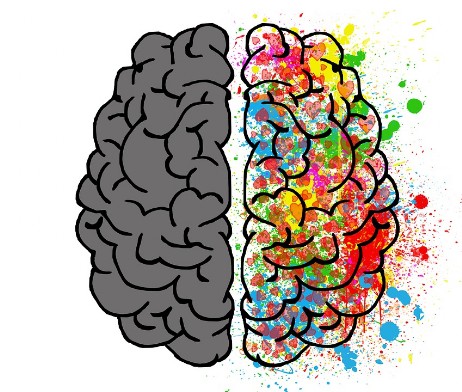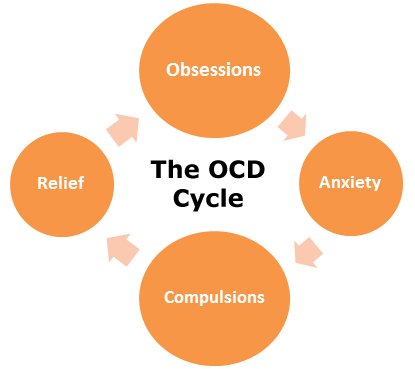
Dyscalculia
The core deficit of dyscalculia is a lack of numerosity, i.e. the inability to understand the concept of 'more than/less than' (Butterworth 2013). It is not linked to either reading ability or working memory. Around five percent of the population have dyscalculia on its own, but a greater number have it combined with another Specific Learning Difficulty. Typical symptoms of dyscalculia:
- has difficulty when counting backwards
- has a poor sense of number and estimation
- has difficulty in remembering ‘basic’ facts, despite many hours of practice/rote learning
- has no strategies to compensate for lack of recall, other than to use counting
- has difficulty in understanding place value and the role of zero
- has no sense of whether any answers that are obtained are right or nearly right
- tends to be slower to perform calculations
- forgets mathematical procedures, especially as they become more complex, for example ‘long’ division
- addition is often the default operation - the other operations are usually very poorly executed (or avoided altogether)
- avoids tasks that are perceived as difficult and likely to result in a wrong answer
- weak mental arithmetic skills
- high levels of mathematics anxiety
Dysgraphia
Dysgraphia affects up to 10 percent of the population to varying degrees. It affects handwriting and the process of converting thoughts to words. In general, written work may be presented with a mixture of upper/lower case letters, irregular letter sizes and shapes and unfinished letters. Students with dygraphia struggle to use writing as a communication tool and as so much effort goes into the actual writing process, there may seem to be little imagination or thought in their work. There are three types of dysgraphia:
Spatial dysgraphia
Spatial dysgraphia is where the condition is caused by a defect in spatial awareness and students may have illegible spontaneously written work as well as illegible copied work. Spelling skills are generally not impaired.
Motor dysgraphia
Motor dysgraphia is where the condition is caused by poor fine motor skills, poor dexterity and/or poor muscle tone. Generally written work is poor to illegible even if it is copied from another source. While letter formation may be legible in very short samples of writing, this is usually after extreme efforts and the dedication of unreasonable amounts of time on the student's part. Spelling skills are not impaired.
Processing dysgraphia
Processing dysgraphia, which is also called 'dyslexia dysgraphia' is where written work that is created spontaneously is illegible, copied work is good and spelling is poor. A student with processing dysgraphia does not necessarily have dyslexia although it is likely.
Tourette syndrome
Tourette syndrome is a neurological condition where the key features are involuntary and uncontrollable sounds and movements known as tics.
Typically, Tourette syndrome starts in early childhood. It is more common in boys and around 50 percent of people will see a reduction in the symptoms by adulthood. 85 percent of people with Tourette syndrome will also experience co-occurring conditions such as ADHD.
Tics can occur in nearly any part of the body and can be categorised as simple (such as eye blinking, shoulder shrugging, throat clearing and sniffing) or complex (such as jumping, making obscene gestures, repeating a sound and saying socially unacceptable things). Most people think that everybody who has Tourette syndrome swears uncontrollably, but actually only about 10 percent of people with the condition have this symptom.
Obsessive Compulsive Disorder (OCD)
Students with OCD sometimes become afraid of what might happen if something is dirty or uneven, or if they see an 'unlucky' number or colour. They worry that the bad things they're afraid of will come true. They may think that having bad thoughts means they are bad. Obsessions make it hard to concentrate on schoolwork or enjoy activities.
OCD is an anxiety disorder thought to be related to changes in brain chemistry. One to two percent of children are diagnosed with OCD.
OCD is characterised by obsessions and compulsive rituals.
Obsessions
Obsessive thoughts can cause children and teens to feel and act irritable, upset or anxious. Usual obsessions are
- whether something is dirty or germy
- things being symmetrical or even
- things being done in a set order or a specific way
- whether they might have sinned, broken a rule, or offended someone
- numbers, words, sounds, or colours that seem 'lucky' or 'unlucky'
- having unwanted inappropriate thoughts
- body wastes
- illness or harm coming to them or their relatives
Compulsive rituals
People with OCD feel compelled to do specific rituals to get relief from their obsessive thoughts. They do these rituals to 'make sure' things are clean, in order, or 'just right'. Rituals include things like
- washing and cleaning
- repeating specific behaviours — like saying a word or phrase over and over
- going in and out of doorways several times in a row
- checking — like making sure an appliance is off, a door is locked, or repeatedly checking homework
- touching or tapping a certain number of times or in a set way
- ordering or arranging objects 'just so'
- counting — like counting to a certain number, or counting over and over
Doing a ritual gives people with OCD temporary relief from fear, worry, or bad thoughts, but the more a person does a ritual, the more they feel the urge to do it again. Eventually, the ritual doesn't bring as much relief as it once did so a person may do it over, then over again. This is called 'getting stuck'.

Mental health problems affect about 1 in 10 children and young people and children who have special educational needs are more likely to experience a mental health issue than their peers. The Mental Health Foundation list the following as some of the mental health problems that can affect children and young people:
- depression affects more children and young people today than in the last few decades, but it is still more common in adults. Teenagers are more likely to experience depression than young children
- self-harm is a very common problem among young people. Some people find it helps them manage intense emotional pain if they harm themselves, through cutting or burning, for example. Often this does not mean they wish to take their own life
- generalised anxiety disorder (GAD) can cause young people to become extremely worried. Very young children or children starting or moving school may have separation anxiety
- post-traumatic stress disorder (PTSD) can follow physical or sexual abuse, witnessing something extremely frightening or traumatising, being the victim of violence or severe bullying or surviving a disaster
- eating disorders usually start in the teenage years and are more common in girls than boys. The number of young people who develop an eating disorder is small, but eating disorders such as anorexia nervosa and bulimia nervosa can have serious consequences for their physical health and development
Sensory Processing Disorder
We recieve and perceive sensory input through sights, sounds, touch, tastes, smells, movement and balance, body position and muscle control. Difficulty taking in or interpreting this input can be a sign of sensory processing disorder. Someone can either experience sensory stimuli too accutely (hypersensitivity) or they don't experience it enough (hyposensitivity).
| signs of hypersensitivity | signs of hyposensitivity | |
tactile | Refuses or resists messy play, resists cuddling and light touch, dislikes kisses, rough clothes or seams in socks, resists baths, showers, or going to the beach. | Doesn't realise hands or face are dirty, touches everything and anything constantly, may be self-abusive, plays rough with peers, doesn't seem to feel pain (may even enjoy it). |
| vestibular | Avoids playground and moving equipment, fearful of heights, dislikes being tipped upside down, often afraid of falling, walking on uneven surfaces, and avoids rapid, sudden or rotating movements. | Craves any possible movement experience, especially fast or spinning, never seems to sit still, is a thrill seeker, shakes legs while sitting, loves being tossed in the air, never seems to get dizzy, full of excessive energy. |
| proprioceptive | Difficulty understanding where body is in relation to other objects, appears clumsy, bumps into things often, moves in a stiff and/or uncoordinated way. | Constantly jumping, crashing, and stomping, loves to be squished and bear hugs, prefers tight clothing, loves rough play, and may be aggressive with other children. |
| auditory | Covers ears and startled by loud sounds, distracted by sounds not noticed by others, fearful of toilets flushing, hairdryers and/or vacuums, resists going to loud public places (even dining room at school). | May not respond to verbal cues, loves loud music and making noise, may appear confused about where a sound is coming from, may say "what?" frequently. |
| oral | Picky eater with extreme food preferences and limited repertoire, may gag on textured food, difficulty with sucking, chewing, and swallowing, extremely fearful of the dentist, dislikes toothpaste and brushing teeth. | May lick, taste or chew on inedible objects, loves intensely flavoured foods, may drool excessively, frequently chews on pens, pencils, or shirt. |
| olfactory | Bothered or nauseated by cooking, bathroom and/or perfume smells, may refuse to go places because of the way it smells, chooses foods based on smell, notices smells not normally noticed by others. | May not notice unpleasant or noxious odours, smells everything when first introduced to it, may not be able to identify smells from scratch 'n sniff stickers. |
| visual | Irritated by sunlight or bright lights, easily distracted by visual stimuli, avoids eye contact, may become over aroused in brightly coloured rooms. | Difficulty controlling eye movements and tracking objects, mixes up similar letters, focuses on little details in a picture and misses the whole, loses place frequently when reading or copying from the board. |
Executive functions are a set of mental processes which include planning, organising, paying attention, remembering details and managing time and space. Executive functioning issues affect many students who have special educational needs.
Someone who has executive functioning disorder may struggle with
- initiating tasks
- completing tasks
- holding information in their head
- explaining them self clearly
- managing time
- problem solving
- organisation
- planning
- multitasking
Oppositional Defiant Disorder (ODD)
Many children express defiance at some stage while growing up - this is natural. For some children though, this becomes excessive and extreme and causes disruption to family life and day-to-day functioning.
Someone who has ODD may
- throw repeated temper tantrums
- excessively argue with adults, especially those in authority
- actively refuse to comply with requests and rules
- deliberately try to be annoying or upset others
- be easily annoyed by others
- blame others for their mistakes
- have frequent outbursts of anger and resentment
- be spiteful and seek revenge
- swear or use obscene language
- say mean and hateful things when upset
Visual stress
Visual stress, also know as Meares-Irlen syndrome, causes someone difficulties with reading due to glare from the page or screen. Using coloured overlays or coloured lenses can help dramatically improve the symptoms.
Approximately five percent of the population are severely affected by visual stress and 20 percent to a lesser degree. The symptoms can occur despite normal vision. Visual stress is most common in people who have dyslexia.
Symptoms and signs of visual stress are
- movement of print
- blurring of print
- letters changing shape or size
- letters fading or becoming darker
- patterns appearing, sometimes described as 'worms' or 'rivers' running through print
- illusions of colour - blobs of colour on the page or colours surrounding letters or words
- becoming restless when reading
- frequent headaches or eyestrain
- skipping words and lines when reading
- rubbing eyes and blinking excessively
